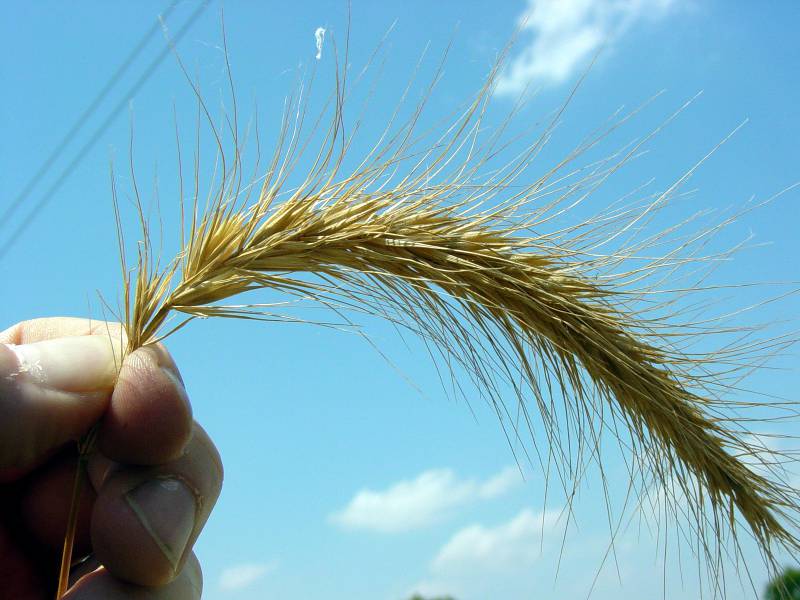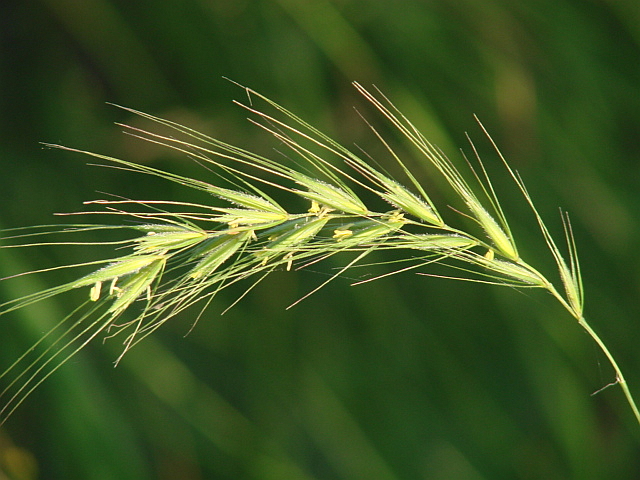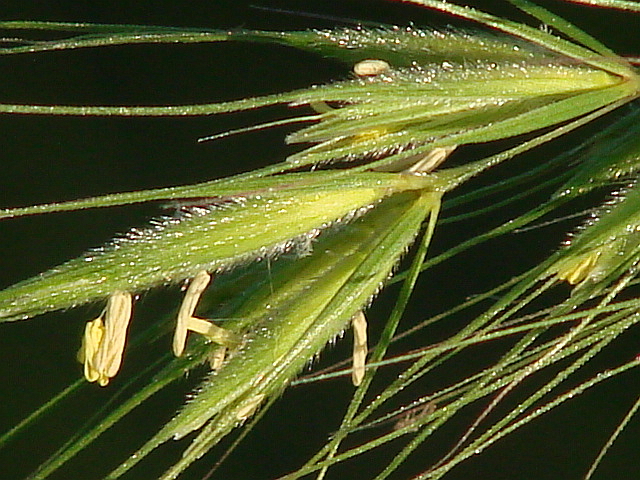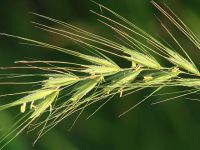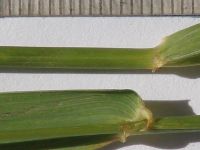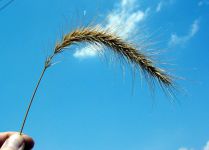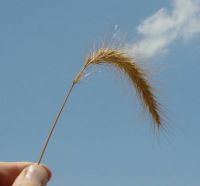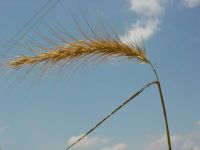Distribution: Occurring east of the Cascades crest in Washington; Alaska to California, east to Quebec, North Carolina and Texas
Habitat: Streambanks and thickets on sandy, dry to moist soil, and in disturbed areas.
Flowers: June-August
Origin: Native
Growth Duration: Perennial
Conservation Status: Not of concern
Pollination: Wind
Tufted perennials, forming small clumps, the hollow culms up to 1.5 m. tall.
Sheaths open, usually glabrous; auricles well-developed; ligules 0.5-1.5 mm. long, with fine marginal hairs; blades flat, coarse, usually scabrous, 7-15 mm. broad, often glaucous.
Inflorescence a single terminal spike 10-20 cm. long, often drooping, the upper spikelets crowded, the lower barely overlapping; spikelets articulate above the glumes, 2- to 6-flowered, borne flatwise on the rachis, 2 per node; glumes scabrous, hardened, the base spreading, the awn slender and divergent; lemmas scabrid-pubescent, the body 10-15 mm. long, tapered gradually into a divergent, scabrid awn up to 3.5 cm. long; paleas nearly as long as the body of the lemmas.
Publication: Sp. Pl. 1: 83–84. 1753. 1753.
-
var. canadensis – Canadian wild rye, nodding wild rye
 Occurring east of the Cascades crest in Washington; Alaska to California, east to Quebec, North Carolina and Texas.
Occurring east of the Cascades crest in Washington; Alaska to California, east to Quebec, North Carolina and Texas.
PNW Herbaria: Specimen records of Elymus canadensis in the Consortium of Pacific Northwest Herbaria database
WA Flora Checklist: Elymus canadensis checklist entry
OregonFlora: Elymus canadensis information
E-Flora BC: Elymus canadensis atlas page
CalPhotos: Elymus canadensis photos

